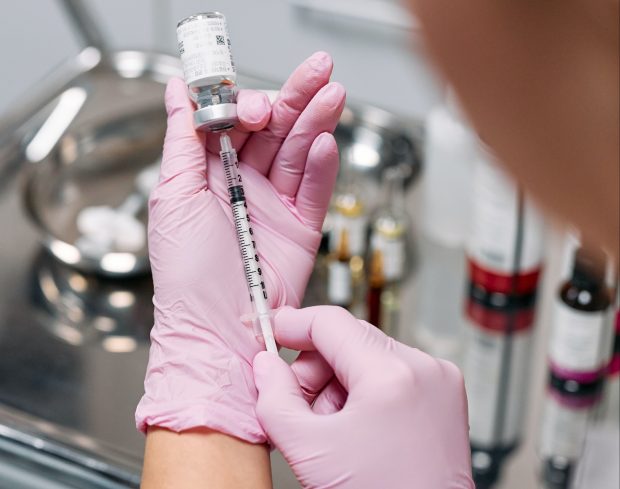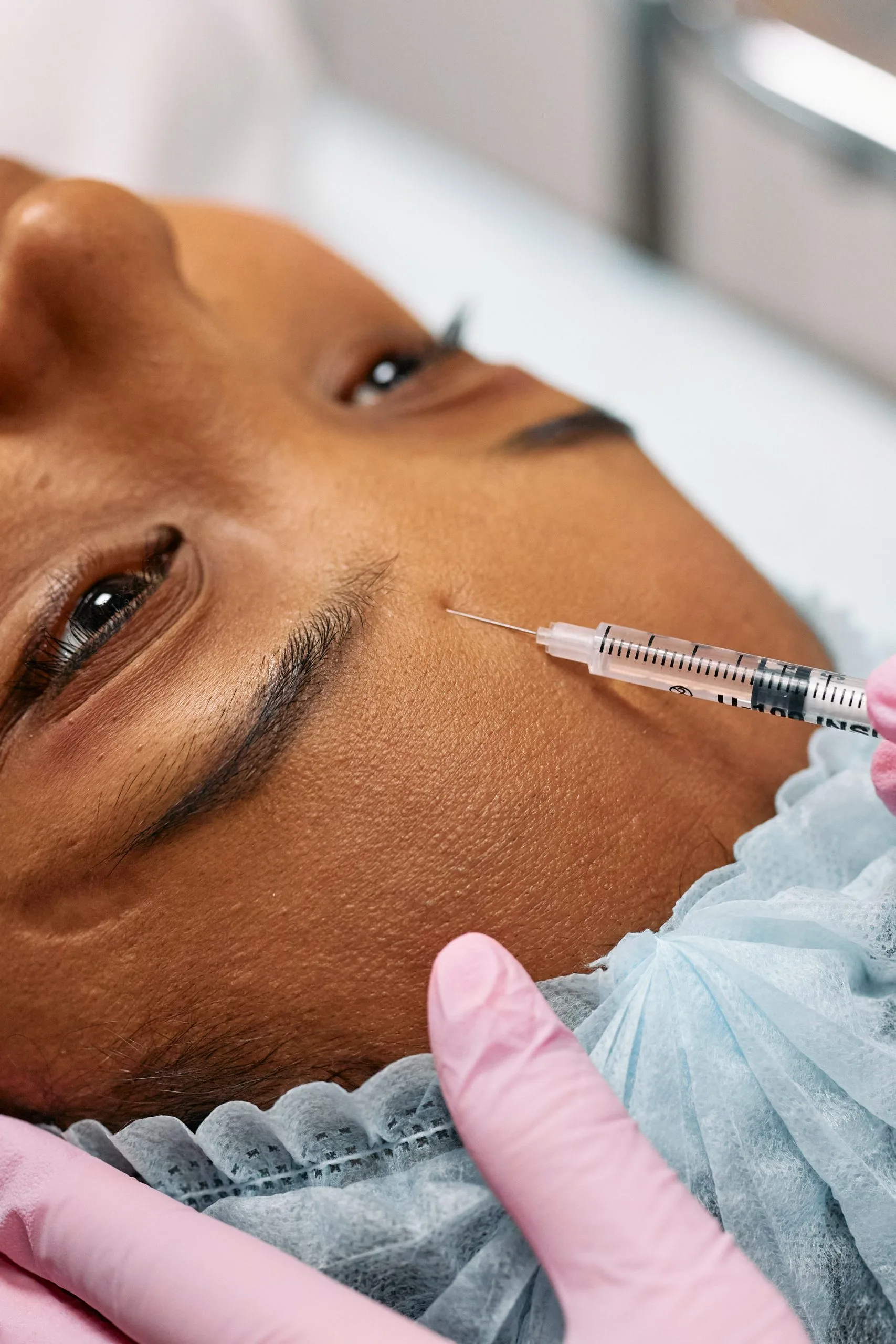In the beauty and cosmetics industry, minimally invasive treatments have seen a rise in popularity, more specifically, injectables. Two of the most popular treatments in this regard are Botox and fillers. While these two may seem similar, they work quite differently and offer different final results. We provide a brief breakdown of these two widely popular cosmetic treatments to help you differentiate between the two and identify which one may be the right pick for you.
What Is Botox?
It is important to note that botox is the name of a form of botulinum neurotoxin. However, the name has now been adopted as the overall term for the treatments. So while you book an appointment for “Botox,” you may be getting another brand like Dysport, Xeomin, or Jeuveau.
This purified form of botulinum neurotoxin is a neuromodulator that has the ability to temporarily relax muscle movement in our face and neck. It does this by inhibiting the release of acetylcholine. Acetylcholine is an organic chemical and neurotransmitter that is able to contract certain muscles. When used strategically, it can lead to a decrease in the appearance of wrinkles and fine lines.
How Does Botox Work?
Botox works by blocking nerve signals in the muscles where it is injected. By blocking the release of acetylcholine, the muscles do not receive the message to contract, meaning muscle spasms and movements that cause wrinkling either stop or are greatly reduced. Once injected, the muscles are essentially paralyzed, which leads to a reduction of dynamic wrinkles.
These are wrinkles that are only present when muscles contract. Its ability to smooth out existing lines and inhibit movement that can leave deep wrinkles over time has led to some dermatologists and aestheticians recommending it as a preventative treatment. Botox doesn’t remove wrinkles, it just temporarily disables the facial muscles that cause them.
What Are Fillers?
Commonly known as dermal fillers, these gel-like substances are injected beneath the skin to restore smooth lines, and lost volume, and soften creases. There are different kinds of fillers that can be used, namely:
- Hyaluronic Acid (HA): Hyaluronic acid is a naturally occurring substance that is found in your skin. It is responsible for keeping your skin plump and hydrated. HA fillers are typically soft and gel-like, lasting about 6–12 months before your body naturally and gradually absorbs the particles.
- Calcium Hydroxylapatite (CaHA): This is another naturally occurring substance, primarily found in our bones. When used as a filler, the nearly microscopic calcium particles are suspended in a smooth gel. It is typically used for deeper wrinkles, lasting about 12 months.
- Poly-L-lactic Acid: This is a biocompatible, biodegradable synthetic substance, classified as a “collagen stimulator”. Their main role is to smooth fine lines by promoting the rebuilding of natural collagen in your skin. It tends to last more than 2 years.
- Polymethylmethacrylate (PMMA): This is another synthetic, biocompatible substance. Consisting of collagen and very small balls that remain beneath your skin, this helps give your skin volume and maintained firmness through continued support.
The filler that is used depends on the location of the injection and the desired effect. While it serves many purposes, the main reasons why people opt for fillers include:
- Adding volume to sagging skin
- Plumping up lips and cheeks
- Making your facial features more symmetrical
- Smoothing wrinkling and creases in your face

Photo by Cottonbro Studio on Pexels
Key Differences Between Botox and Dermal Fillers
|
Botox |
Dermal Fillers |
|
|
How They Work |
Freezes muscles to stop wrinkles and creases |
Fills in or plumps wrinkles |
|
What They Address |
Addresses dynamic lines |
Addresses volume loss and folds on the face |
|
How Long They Last |
3–4 months |
Varying times, depending on which filler you use |
|
How Permanent Are They? |
Cannot be reversed, so you must wait for the neurotoxin to naturally degrade over time |
can be dissolved with an enzyme called hyaluronidase |
Side Effects of These Treatments
Although Botox and dermal fillers are minimally invasive, they still carry some potential risks. It must be noted that while experiencing this is a possibility, it is quite rare. In fact, a study in JAMA Dermatology found that when performed by experienced board-certified dermatologists, side effects only occurred in less than 1% of recipients, with most of them being minor.
Botox Side Effects
- Drooping eyelid or brow when injected near the eye
- Headaches
- Nausea
- Flu-like symptoms
- Hives, rashes, or itching
- Dry mouth
If too much is injected, it can lead to muscles not functioning properly. This is because neuromodulators are able to weaken muscles.
Dermal Filler Side Effects
- Rashes, itching, or pimple-like eruptions
- Death of skin cells due to loss of blow flow to the area
- Redness and skin bruising
- Bleeding and swelling of skin
- Skin damage that can cause a wound, infection, or scarring
Improper technique can lead to lumps, bumps, and the filler migrating to unwanted areas according to experts at MayLips.
So Which Is Better?
Botox and dermal fillers are different products, offering you different end results. In fact, the only similarity between the two is that they’re both administered with a syringe. While Botox eliminates wrinkles that occur due to muscular contractions, dermal fillers are effective for filling hollowing, and flattening skin. The final decision will be based on your individual needs. This can only be determined through a consultation with a qualified medical provider.



![women [longevity live]](https://longevitylive.com/wp-content/uploads/2020/01/photo-of-women-walking-down-the-street-1116984-100x100.jpg)










